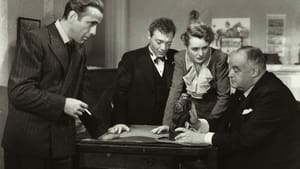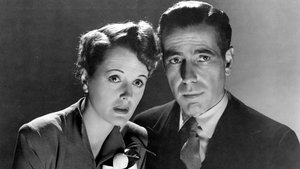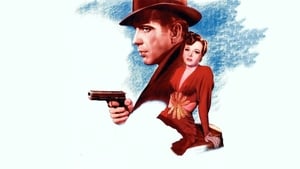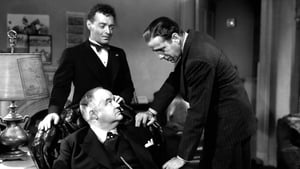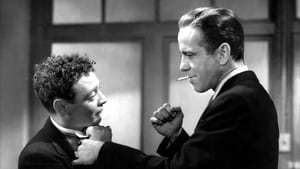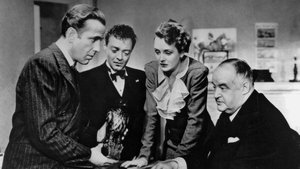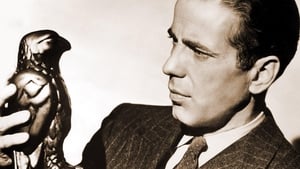Contact: info@alwanfilm.com
Video Sources 0 Views
- Watch trailer
- The Maltese Falcon


Synopsis
Table of Contents
ToggleReview: The Maltese Falcon 1941 Colorized – A Definitive Noir Classic

Introduction
The Maltese Falcon, released in 1941, is a quintessential film noir directed by John Huston, adapted from the novel by Dashiell Hammett. Renowned for its hard-boiled dialogue, shadowy cinematography, and iconic performances, this classic detective thriller remains a timeless masterpiece of the genre. In this review, we’ll delve into the dark and intriguing world of The Maltese Falcon and explore its enduring legacy in the annals of cinema.
Check The Full Colorized Movies List
Check Our Colorized Movies Trailer Channel
Understanding The Maltese Falcon 1941 Colorized: Director, Cast, and Genre
Directed by John Huston in his directorial debut, The Maltese Falcon features a stellar cast led by Humphrey Bogart, Mary Astor, and Peter Lorre. The film belongs to the film noir genre, characterized by its cynical worldview, morally ambiguous characters, and atmospheric visuals.
Exploring the World of The Maltese Falcon 1941 Colorized: Plot and Characters
The Maltese Falcon follows the story of hard-boiled private detective Sam Spade, who becomes embroiled in a web of deceit and betrayal when he’s hired to track down a valuable statuette known as the Maltese Falcon. As Spade delves deeper into the mystery, he encounters a colorful cast of characters, including the enigmatic femme fatale Brigid O’Shaughnessy and the eccentric Joel Cairo, each with their own hidden agendas and dark secrets.
The Art of Film Colorization
While The Maltese Falcon was originally filmed in black and white, its early colorized version adds a new layer of depth to its atmospheric visuals. The colorization process enhances the film’s noir aesthetic and brings its shadowy characters to life with striking clarity.
Early Colored Films: A Brief History
The history of early colored films is marked by innovation and experimentation as filmmakers sought to enhance the visual appeal of their movies. From hand-tinted frames to pioneering technicolor processes, the evolution of colorization techniques transformed the cinematic landscape, offering audiences a new way to experience the darkness and intensity of film noir.
The Maltese Falcon (1941) and Its Early Colored Version
The decision to release The Maltese Falcon in a colorized format was made with the intention of immersing audiences in the film’s noir atmosphere and enhancing its visual impact. While some purists may prefer the original black and white version, the early colorized edition of The Maltese Falcon adds a new layer of depth to its atmospheric cinematography and captures the moral ambiguity of its characters with breathtaking clarity.
The Debate Over Film Colorization
The debate over film colorization continues to divide audiences and industry professionals alike. While some argue that colorization breathes new life into classic films and makes them more accessible to modern audiences, others maintain that it compromises the artistic integrity of the original work. As technology advances and filmmaking techniques evolve, the debate over colorization remains a topic of ongoing discussion within the film community.
Examining The Maltese Falcon (1941) as an Early Colored Film
Viewing The Maltese Falcon in its early colorized iteration offers audiences a fresh perspective on its noir aesthetics and morally complex characters. The colorization process enhances the film’s shadowy visuals and captures the nuances of its intricate plot with stunning clarity. As viewers are drawn into the labyrinthine world of Sam Spade and his quest for the elusive Maltese Falcon, they are treated to a visual feast that immerses them in the timeless allure of film noir.
Influence and Legacy: The Maltese Falcon 1941 Colorized’s Impact on Cinema
The Maltese Falcon is widely regarded as a seminal work in the film noir genre that continues to influence filmmakers and inspire new generations of cinephiles. Its hard-boiled dialogue, atmospheric visuals, and morally ambiguous characters have left an indelible mark on cinema, shaping the way detective thrillers are made and appreciated to this day.
Director’s Cinematic Legacy: Beyond The Maltese Falcon 1941 Colorized
John Huston’s directorial legacy extends far beyond The Maltese Falcon, encompassing a diverse body of work that includes acclaimed films such as The Treasure of the Sierra Madre and The African Queen. As one of the most influential filmmakers of his generation, Huston was known for his ability to craft compelling narratives that explored the darker aspects of the human experience with depth and nuance. The Maltese Falcon stands as a testament to his talent and creativity, solidifying his reputation as one of the great auteurs of classic Hollywood cinema.
Themes Explored in The Maltese Falcon 1941 Colorized
At its core, The Maltese Falcon explores themes of greed, betrayal, and moral ambiguity in the seedy underbelly of urban society. Through its hard-boiled dialogue and morally complex characters, the film offers a nuanced portrayal of the human condition, challenging viewers to confront their own beliefs about right and wrong as they navigate the treacherous world of crime and corruption.
Reception and Controversy Surrounding The Maltese Falcon 1941 Colorized
Upon its release, The Maltese Falcon received widespread critical acclaim for its atmospheric visuals, hard-boiled dialogue, and iconic performances. While the decision to release the film in a colorized format sparked debate among purists, its enduring popularity has cemented its status as a timeless classic of the film noir genre.
Where to Watch The Maltese Falcon 1941 Colorized Online
For those eager to experience The Maltese Falcon for themselves, the film is readily available on popular streaming platforms such as Amazon Prime Video, Google Play Movies, and iTunes. Whether viewed in its original black and white format or its early colorized iteration, The Maltese Falcon offers a cinematic experience that is both atmospheric and visually stunning.
FAQs About The Maltese Falcon 1941 Colorized
1. Is The Maltese Falcon based on a true story?
No, The Maltese Falcon is a fictional film adapted from the novel of the same name by Dashiell Hammett. While the film’s storyline may draw inspiration from real-life events, its characters and plot are works of fiction.
2. Who starred in The Maltese Falcon?
The Maltese Falcon stars Humphrey Bogart in the role of hard-boiled private detective Sam Spade, alongside Mary Astor as the enigmatic femme fatale Brigid O’Shaughnessy and Peter Lorre as the eccentric Joel Cairo.
3. What is the central message of The Maltese Falcon?
At its core, The Maltese Falcon explores the themes of greed, betrayal, and moral ambiguity in the seedy underbelly of urban society. Through its hard-boiled dialogue and morally complex characters, the film offers a nuanced portrayal of the human condition, challenging viewers to confront their own beliefs about right and wrong as they navigate the treacherous world of crime and corruption.
4. Why was The Maltese Falcon released in a colorized format?
The decision to release The Maltese Falcon in a colorized format was made with the intention of immersing audiences in the film’s noir atmosphere and enhancing its visual impact. While some purists may prefer the original black and white version, the early colorized edition of The Maltese Falcon adds a new layer of depth to its atmospheric cinematography and captures the moral ambiguity of its characters with breathtaking clarity.
5. What is the legacy of The Maltese Falcon?
The Maltese Falcon is widely regarded as a seminal work in the film noir genre that continues to influence filmmakers and inspire new generations of cinephiles. Its hard-boiled dialogue, atmospheric visuals, and morally ambiguous characters have left an indelible mark on cinema, shaping the way detective thrillers are made and appreciated to this day.
6. Are there any sequels or remakes of The Maltese Falcon?
No, there have been no official sequels or remakes of The Maltese Falcon. However, the film’s enduring popularity has inspired countless reinterpretations and homages in various media. Nonetheless, none have captured the hard-boiled essence and noir aesthetics of the original 1941 classic.
7. Where can I watch The Maltese Falcon online?
For those eager to experience The Maltese Falcon for themselves, the film is readily available on popular streaming platforms such as Amazon Prime Video, Google Play Movies, and iTunes. Whether viewed in its original black and white format or its early colorized iteration, The Maltese Falcon offers a cinematic experience that is both atmospheric and visually stunning.
Conclusion
In conclusion, The Maltese Falcon (1941) stands as a definitive masterpiece of the film noir genre, showcasing the talents of director John Huston and a stellar cast led by Humphrey Bogart. Whether viewed in its original black and white format or its early colorized iteration, the film offers a timeless exploration of greed, betrayal, and moral ambiguity in the seedy underbelly of urban society. As viewers are drawn into the labyrinthine world of Sam Spade and his quest for the elusive Maltese Falcon, they are treated to a visual and narrative feast that continues to enthrall and inspire audiences around the world.

